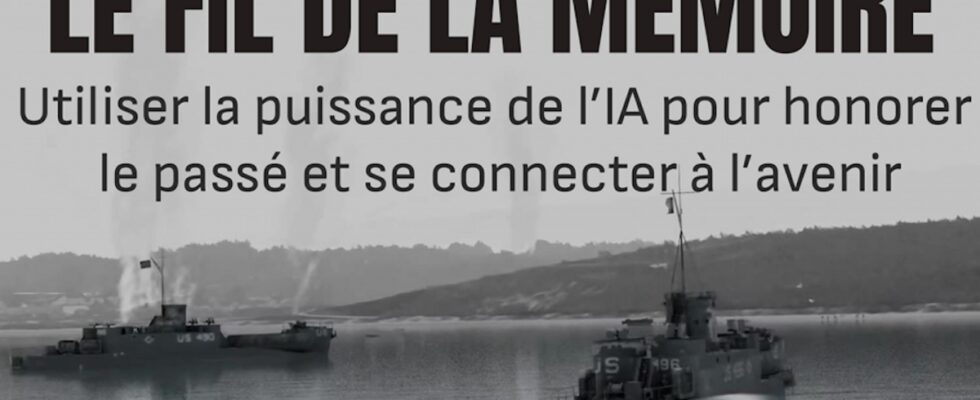The Thread of Memory ©Microsoft
This June 6, we celebrate the 80th anniversary of the landing in Normandy. Microsoft, in partnership in particular with Iconem and Mission Libération, decided to mark the occasion by proposing an initiative combining exhibitions and online experience. 2024 obliges, it’s impossible not to find a dose of AI there.
A physical and online exhibition for D-Day
The Thread of Memory is to begin with an immersive exhibition that will move. This is installed at the Pôle Equestrian du Haras national de Saint-Lô (Manche) from June 5 to 16, 2024. Then, she will be in Saint-Raphaël (Var) from August 15, and finally in Paris in the fall. . For those who are unable to attend, an online experience is also available.
The Thread of Memory website. ©Microsoft
For the moment, the site lefildelamemoire.com only allows access to one of the three exhibitions which will eventually be offered. Only the section devoted to D-Day in Normandy (Operation Overlord) leads to content, and you will have to wait until August 15 and August 19 respectively to be able to access the portions dedicated to Operation Dragoon in Provence and the Liberation of Paris.
The events of D-Day demonstrate the unity of the Allied forces who, despite their individual differences, united in a common goal: to restore the freedom of Europe then under Nazi control. Microsoft’s Memory Thread project uses AI to bring personal stories and photographs to life, so that each of us can learn and pass on the hard-earned lessons of the past.
AI to link past and present
But what exactly does AI bring to a subject that has already been discussed and studied many times? According to Microsoft, artificial intelligence “helps the past come to life by making it possible to animate archive photos, add 3D effects or even by assisting historians in writing image captions.” Below is a concrete example:
An example of an AI-enhanced photo caption. ©Microsoft
AI also allows photographs to be geographically repositioned as close as possible to their current location in order to overlay maps from 80 years ago on those of today. In physical exhibitions, visitors can also “Search photo and video archives in natural language to connect with the heroes of D-Day and discover their stories.“The objective is of course to make the phase of (re)discovery of History more rich and interactive, but also to speak to new generations using the gateway that is technology.
